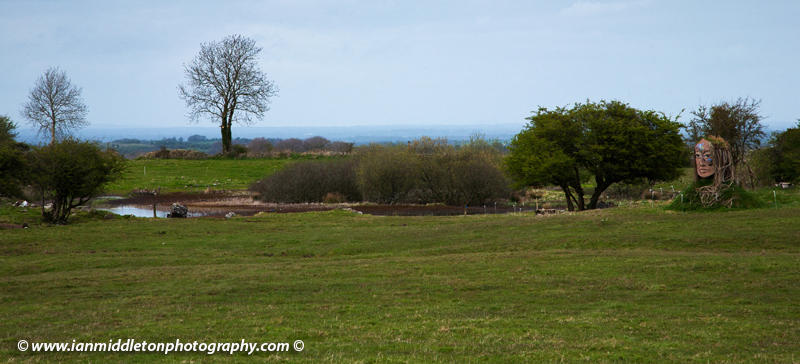Ail na Mireann (the stone of the Divisions)
Burial place of the Goddess Ériu, from whom Ireland takes its name.

On the R390 between Mullingar and Athlone in County Westmeath lies the Hill of Uisneach, a hill of paramount significance in ancient Irish history. However, like most of Ireland’s ancient sites it remains so low key that you could very easily miss it.
Upon first glance, the Hill of Uisneach resembles many other small green hills that dot the hilly landscape of the Irish midlands. But this unassuming little hill holds many of the secrets to Ireland’s ancient past; including how the country got its name.
The Ancient Divisions
In modern day Ireland there are four provinces: Leinster, Munster, Connaught and Ulster. But in ancient times there were five: the fifth being the Province of Meath. This was the ancient capital of Ireland and seat of the High King. While the High King later ruled from the nearby Hill of Tara, it was on this hill that he met with his provincial kings.
This 30-ton stone, also known as the Cat Stone, looks more like a giant bolder that has been cracked into several pieces. The splits are believed to represent the five ancient divisions of Ireland. Here the five ancient provinces met, symbolising this as the centre of Ireland. Today folklore has classified it as the spiritual gateway to the ancient fifth province.
Burial Place for Ireland's Namesake
According to legend, the Cat Stone is the burial place and dwelling of Queen Ériu, Queen of the Tuatha de Danann (A powerful, magical race that inhabited Ireland before the Celts). When the Milesians (known to us today as the Celts) came to Ireland, a great battle was fought between the two races.
On the Hill of Uisneach, Amergin, King of the Milesians, fought with Queen Ériu. The Queen was mortally wounded, so she asked Amergin to grant her a dying wish; to bury her under Ail na Mireann and name the island after her. Thus Ériu became a Celtic Goddess who gave Ireland its name. Ériu, the Gaelic name, was later changed by the Vikings into “Ériu’s Land”, or Ireland.
The Fir Bolg
The divisions were first made by an ancient race known as the Fir Bolg. It is on this hill that the first fire was lit for the pagan festival of Bealtaine (around May). People said that a fire lit at the summit here could be seen all over Ireland, and that this was the signal to the rest of the country to begin lighting other fires.
At 596ft above sea level, it’s hardly a mountain, but it still commands great views across the country. Some say that 20 counties are visible on a clear day.
Lugh of the Long Arm

As well as the high kings, many other famous characters from Ireland’s folklore visited this hill. The Sun God Lugh, warrior of the Tuatha de Danann, came here to rescue his mother from the tyranny of the evil Formorians. After defeating the Formorians and killing their leader, Balor of the Evil Eye, Lugh became king. He is credited with starting the harvest celebration Lughnasa, held in August. Legend says he drowned in a lake on the hill, now known as Lough Lugh. The nearby burial mound “Carn Ludach” is his resting place.
Saint Patrick on the Hill of Uisneach
The hill is littered with many other archaeological sites such as Saint Patrick’s Bed, where the saint was believed to have spent the night after visiting with two brothers here. Dagda, the father God of the Tuatha de Danann, also lived here. On the north side of the hill are two souterrains believed be the stable of his solar horses.
Getting there and around:
Entrance to the hill is along the R390 between Mullingar and Athlone, close to the little village of Killare. If you are coming from Athlone, look out for the Uisneach Inn pub. The entrance is just past this. The hill is on private land and entry is only allowed via guided tours. You can book these via this website: www.uisneach.ie
Read another article about Ireland here – Donegal – Host to Tony Blair’s first pint of Guinness
My Ireland Book
Read the story of my first ever trip around Ireland in my book, Hot Footing Around the Emerald Isle.
With just a backpack as a home, a guidebook in one hand, a bizarre travelogue in the other and very little money in my bank account, I leave my home and set off to this little country that has always been my neighbour, yet overlooked by myself for many years as I pursued dreams to travel to far and exotic countries. However, I was soon to learn that one of the most beautiful places in the world was right on my doorstep.












One Response